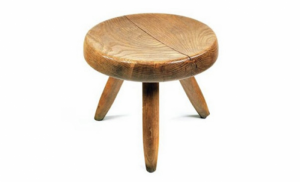 It shouldn’t surprise you to hear that 98 percent of Best-in-class firms call individual financial compensation a top-three sales motivator (according to Aberdeen research). But when compensation is checked off of your sales incentive list, what’s next? According to the same research, recognition and competition.
It shouldn’t surprise you to hear that 98 percent of Best-in-class firms call individual financial compensation a top-three sales motivator (according to Aberdeen research). But when compensation is checked off of your sales incentive list, what’s next? According to the same research, recognition and competition.
Paul Carrington, our director of strategic accounts at LevelEleven, always suggests that clients look at a unique combination of compensation, recognition and competition as forming a three-legged stool for sales motivation. Take one of the legs out, or have one disproportionately longer than the other, and it makes for a rough ride. Here’s a breakdown of that look:
RECOGNITION
When Aberdeen surveyed Best-in-class firms on their top non-financial motivators for sales success, the most popular choice – chosen by 57 percent of respondents – was internal recognition for positive performance. Building contests around positive behaviors provides a way to promote opportunities for such recognition. Displaying real-time leaderboards (such as through LeaderTV) provides a way to maximize that. Let everyone in the office see who’s on top of a contest, and internal recognition for a positive behavior should follow naturally. (For more best practices on improving recognition through sales contests, read our post: “Workplace Contests Can Better Your Recognition Game.”)
When it comes to sales contests, recognition can be enough to drive employees by itself, too; you aren’t required to attach a costly sales incentive to that. When hiredMYway launched its first sales contest through Compete, the incentive was simply “mad props,” as director of sales Willie McMullen says. Here’s what Willie saw as a result of that incentive: “Within five minutes of kicking off our first contest, my reps were running through the office and ripping through the phones.” Outperforming all of those reps was one salesperson who typically exhibits low energy. (To read more on hiredMYway’s contest success, download our white paper here.)
COMPETITION
The second most popular response for Best-in-class firms asked to indicate their top non-financial motivators for sales success happens to be our favorite: Competition came in at 35 percent. It landed ahead of:
- Learning and developing new skills (21 percent)
- Promotional opportunities within the company (18 percent)
- Employee engagement programs aligned to company values (15 percent)
We regularly see organizations use competition to not only motivate spikes in positive actions, but to create long-lasting behavioral changes. For example, take Agility Communications Group. When its leadership team wanted to increase Chatter usage among employees, they ran a competition around it. Numbers quickly went up over the course of a month from 1 to 1,674 Chatter posts. But two weeks after the competition, Agility learned it was just a spike; the number of posts dropped by 50 percent. Although the contest did serve an important purpose – to introduce the team to the value of Chatter – it needed to inspire complete Chatter adoption. So Agility ran two more contests to do that. Its team still uses the platform today as its main vehicle for collaboration. (For Agility’s complete story, read our post: “From Zero to Chatter in 30 Days”)
There’s no magic formula when considering these incentives; your team will find motivation in a unique combination of compensation, recognition and competition.
Most organizations focus on the financial incentives component, but incorporating recognition and competition as well will ensure that you’re driving motivation at a maximum level. Then there’s the best part: That three-legged stool will continue to support your team as they maintain that motivation.




